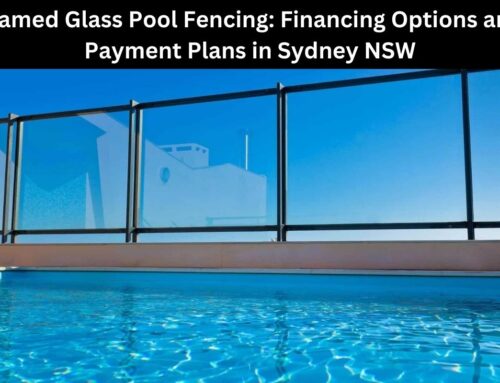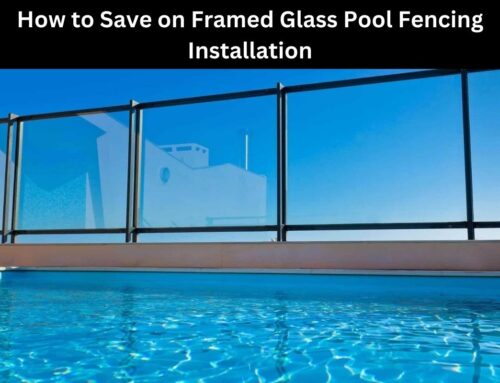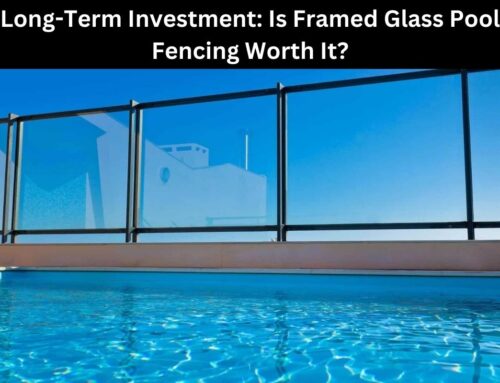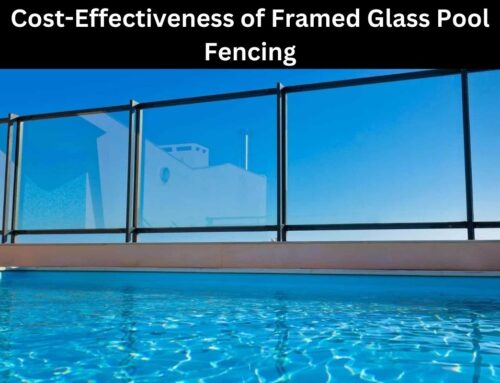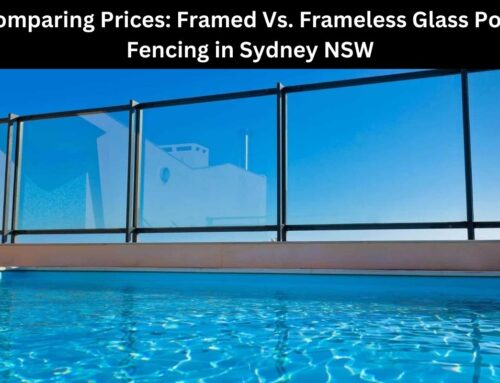Table of Contents
Frameless glass pool fencing has become increasingly popular in NSW, Australia, due to its sleek and modern design that enhances the aesthetic appeal of outdoor spaces. However, the installation and maintenance of such fencing must adhere to strict building codes to ensure the safety of pool users.
The role of building codes in frameless glass pool fencing cannot be overstated. These codes serve as a comprehensive set of guidelines that address various safety aspects, such as height requirements, gate specifications, and glass quality standards. By following these codes, pool owners can create a secure and hazard-free environment for their families and guests.
Professional installation and regular maintenance are crucial in ensuring compliance with these codes, as they guarantee the durability and effectiveness of the fencing system. This article will delve into the specific requirements set by building codes for frameless glass pool fencing in NSW, highlighting the importance of adhering to these regulations for the safety and well-being of all pool users.
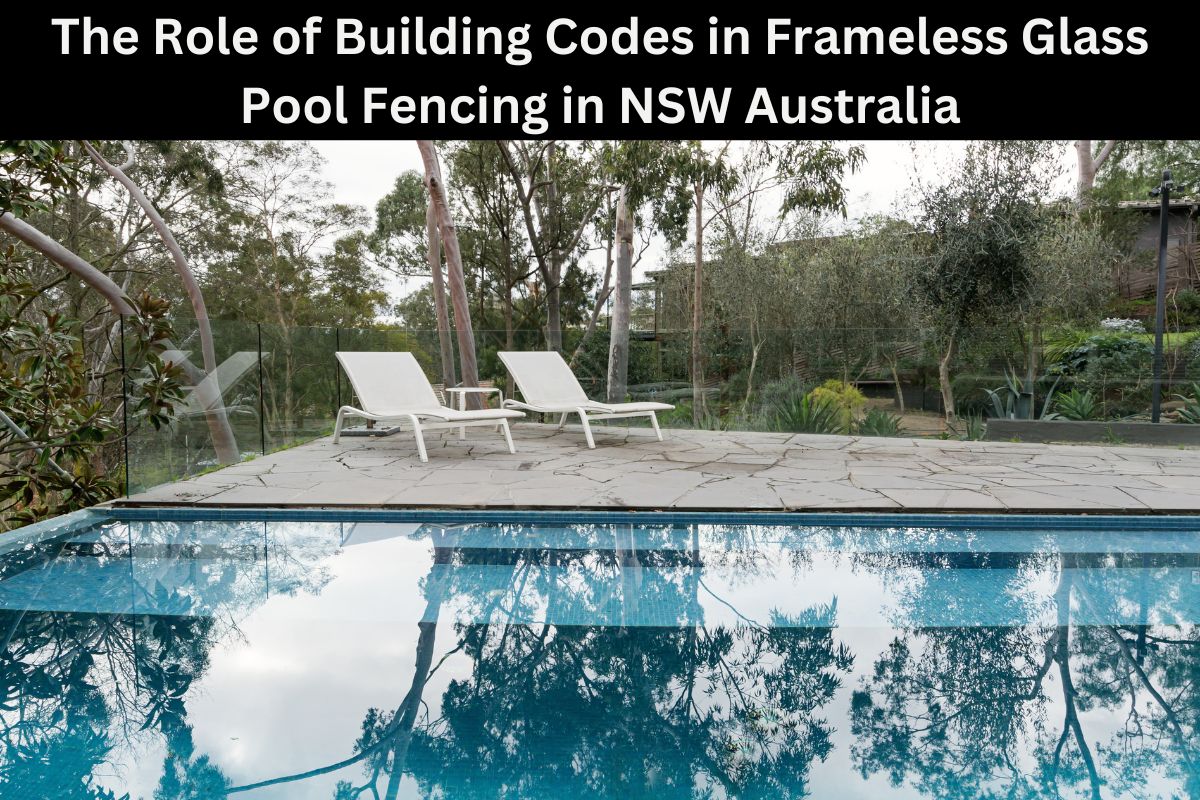
Key Takeaways
- Building codes play a crucial role in ensuring the safety of frameless glass pool fencing in NSW, Australia.
- Compliance with building codes is important for creating a secure and hazard-free environment around pools.
- Adhering to building codes reduces the risk of accidents and injuries by enforcing specific requirements for pool fencing.
- Professional installation and regular maintenance are necessary for adhering to building codes and ensuring the longevity and safety of frameless glass pool fencing.
Understanding the Importance of Building Codes for Pool Safety
The significance of building codes in ensuring pool safety can be comprehended through an examination of their role in establishing regulations for frameless glass pool fencing in NSW, Australia. Building codes play a crucial role in ensuring the safety of individuals using swimming pools, and this is particularly important when it comes to frameless glass pool fencing.
These codes provide a set of guidelines and standards that must be adhered to during the installation and maintenance of frameless glass pool fencing. One of the main objectives of building codes is to prevent accidents and injuries by enforcing specific requirements for pool fencing. The codes outline the minimum height and spacing between panels, as well as the necessary strength and durability of the materials used. They also specify the type and positioning of gates, latches, and self-closing mechanisms to ensure that access to the pool area is restricted and secure.
By adhering to these codes, the risk of accidents such as drowning or falls into the pool can be significantly reduced. The regulations established by building codes provide a level of assurance to pool owners and users that the frameless glass pool fencing in place meets the necessary safety standards. Understanding the importance of building codes in pool safety is crucial for both professionals involved in the construction industry and individuals seeking to install frameless glass pool fencing. This knowledge sets the foundation for a comprehensive overview of frameless glass pool fencing.
Overview of Frameless Glass Pool Fencing
Overview of frameless glass pool fencing includes a comprehensive examination of the design and installation requirements for ensuring safety and aesthetics in outdoor aquatic environments.
Frameless glass pool fencing is a popular choice for homeowners in NSW, Australia due to its sleek and modern appearance. It provides an unobstructed view of the pool area and creates a sense of openness in the surrounding space.
When it comes to safety, frameless glass pool fencing must adhere to specific requirements to prevent accidents and ensure the well-being of users. The glass panels used in the fencing system must be toughened or laminated to withstand impact and resist breakage. The height of the fence should be at least 1200mm to prevent young children from climbing over. Additionally, there should be no gaps larger than 100mm between the panels to prevent small children from squeezing through.
The installation of frameless glass pool fencing also requires careful consideration. The fencing system should be securely fixed to the ground or other supporting structures to prevent it from being dislodged or knocked over. The gaps between the glass panels and the ground should be minimal to prevent children from crawling underneath.
Understanding the design and installation requirements for frameless glass pool fencing is crucial for ensuring safety in outdoor aquatic environments. Transitioning into the subsequent section about specific requirements for frameless glass pool fencing in NSW, it is important to delve into the detailed regulations and guidelines set forth by the building codes to ensure compliance and safety.
Specific Requirements for Frameless Glass Pool Fencing in NSW
This section will discuss the specific requirements for frameless glass pool fencing in NSW, focusing on three key points:
- Height and gap regulations:
- These regulations dictate the minimum height that the glass panels must be, as well as the maximum gap allowed between the panels.
- The purpose of these regulations is to prevent small children from climbing over or slipping through the fence, ensuring their safety around the pool area.
- Strength and durability standards:
- Frameless glass pool fencing must meet specific strength and durability standards to withstand external forces and weather conditions.
- These standards ensure that the fencing is sturdy and can effectively prevent accidents or injuries caused by the fence collapsing or breaking.
- Gate and latch requirements:
- The gate and latch of frameless glass pool fencing must comply with certain requirements to ensure proper functionality and security.
- The gate should be self-closing and self-latching, with a latch that is positioned out of reach of young children.
- This ensures that the gate remains closed and securely locked at all times, preventing unauthorized access to the pool area.
Compliance with these regulations is essential for all pool owners and builders to ensure the safety and security of pool areas. By adhering to these technical and authoritative guidelines, the risk of accidents and injuries can be minimized, providing a safe environment for users of the pool area.
Height and Gap Regulations
Height and gap regulations for frameless glass pool fencing in NSW Australia are crucial to ensure the safety and compliance of the installations. These regulations are designed to prevent accidents, especially involving children, by setting specific requirements for the height of the glass panels and the gaps between them. According to the NSW Swimming Pool Act 1992, the minimum height for glass pool fencing should be 1200mm. This ensures that young children are unable to climb over the fence and access the pool area unsupervised. Additionally, there are regulations governing the maximum gap allowed between the bottom of the fence and the ground, as well as the gaps between the glass panels themselves. These regulations aim to minimize the risk of children or pets squeezing through the gaps and gaining access to the pool. By strictly adhering to these height and gap regulations, pool owners can create a safe and secure environment for their family and guests.
| Height | Gap |
|---|---|
| 1200mm | 100mm |
Moving on to the subsequent section about ‘strength and durability standards’…
Strength and Durability Standards
Strength and durability standards are crucial in ensuring the safety and longevity of pool fencing installations, evoking a sense of confidence and peace of mind for pool owners and their loved ones.
To achieve this, the building codes in NSW, Australia, have established specific requirements for frameless glass pool fencing. These standards focus on the strength and durability of the materials used, as well as the construction techniques employed. Key considerations include:
- Glass thickness: The glass panels must meet minimum thickness requirements to withstand external forces and prevent breakage.
- Frameless glass connectors: These connectors must be designed and installed to provide sufficient structural integrity and prevent the glass from dislodging.
- Fixing methods: The fencing must be securely fixed to the ground or the supporting structure to ensure stability and resistance to external forces.
- Weather resistance: The materials used should be able to withstand the harsh Australian climate, including exposure to UV radiation and extreme weather conditions.
By adhering to these strength and durability standards, frameless glass pool fencing can provide a safe and long-lasting solution for pool owners.
Moving on to gate and latch requirements…
Gate and Latch Requirements
Gate and latch requirements are essential factors to consider when it comes to ensuring the safety and functionality of pool fencing installations. In New South Wales, Australia, specific regulations exist to guarantee that gates are secure and latches are effective.
According to the Building Code of Australia (BCA), gates must be self-closing and self-latching. This means that they should close and latch automatically from any position. Additionally, the latch should be positioned at least 1.5 meters above the ground to prevent young children from accessing it. The BCA also stipulates that the latch release mechanism should be located on the pool side of the gate, ensuring that only adults can open it.
These requirements are put in place to minimize the risk of unauthorized access to the pool area, thereby enhancing safety.
Moving forward, the subsequent section will discuss the importance of professional installation and maintenance in ensuring compliance with these regulations.
Importance of Professional Installation and Maintenance
Professional installation and maintenance of frameless glass pool fencing in NSW Australia is crucial to ensure the safety and longevity of the structure, fostering a sense of peace and tranquility for homeowners and their loved ones. When it comes to frameless glass pool fencing, it is essential to hire professionals who possess the necessary knowledge and expertise in installation techniques and safety regulations.
One of the key reasons for professional installation is to ensure that the glass panels are correctly installed and aligned. A slight misalignment or improper installation can compromise the structural integrity of the fence, potentially leading to accidents. Additionally, professionals can ensure that the posts and fixings are securely fastened to the ground, providing stability and preventing any dislodgement.
Furthermore, professional maintenance is vital to keep the frameless glass pool fencing in optimal condition. Regular inspections can identify any signs of wear and tear, such as loose fittings or damaged panels, allowing for prompt repairs. This proactive approach helps prevent any potential hazards and maintains the aesthetic appeal of the fencing.
By prioritizing professional installation and maintenance, pool owners can rest assured that their frameless glass pool fencing meets the highest safety standards. This adherence to safety regulations not only protects individuals from accidents but also ensures compliance with building codes. In the subsequent section, we will explore the benefits of complying with building codes for pool owners.
Benefits of Complying with Building Codes for Pool Owners
Complying with building codes for pool owners offers numerous benefits.
Firstly, it provides peace of mind and safety assurance as the pool fencing meets the required standards.
Secondly, it helps pool owners avoid penalties and legal issues that may arise from non-compliance.
Lastly, complying with building codes enhances property value and appeal by ensuring a visually appealing and secure pool area.
It is essential for pool owners to familiarize themselves with the relevant building codes and guidelines to ensure compliance and safety.
Peace of Mind and Safety Assurance
Ensuring peace of mind and safety assurance, adherence to building codes in frameless glass pool fencing in NSW Australia provides a solid foundation for homeowners, guaranteeing compliance with essential safety standards. By following these codes, pool owners can be confident that their pool fencing is designed and installed to minimize the risk of accidents and injuries.
Building codes specify the height, spacing, and strength requirements for frameless glass pool fencing, ensuring that it can withstand external forces and prevent unauthorized access, especially by young children. Additionally, these codes outline the necessary maintenance and inspection procedures to ensure that the fencing remains in good condition over time.
Adhering to these regulations not only helps to prevent accidents but also avoids penalties and legal issues. Transitioning to the next section, understanding the consequences of non-compliance is crucial for pool owners.
Avoiding Penalties and Legal Issues
Avoiding penalties and legal issues is essential for pool owners, as non-compliance with building regulations can result in financial consequences and potential legal action.
In New South Wales, Australia, frameless glass pool fencing is subject to specific building codes that must be adhered to in order to ensure safety and compliance. These codes outline requirements such as the minimum height of the fence, the appropriate gap between panels, and the type of glass and hardware to be used.
By following these regulations, pool owners can avoid penalties and legal issues that may arise from non-compliance. Furthermore, compliance with building codes not only ensures the safety of individuals but also enhances the overall property value and appeal.
Transitioning into the subsequent section, adhering to these regulations can provide peace of mind and reassurance to pool owners.
Enhancing Property Value and Appeal
Enhancing the value and appeal of a property can be compared to adding a finishing touch of elegance and sophistication, like a perfectly placed piece of artwork that completes a room. When it comes to frameless glass pool fencing, this finishing touch not only enhances the aesthetics of the property but also provides an added layer of safety and security.
Here are some key ways in which frameless glass pool fencing enhances property value and appeal:
- Modern and sleek design that complements any architectural style.
- Unobstructed view of the pool area, creating a sense of spaciousness.
- Durable and low-maintenance material that adds value to the property.
- Compliance with building codes and safety regulations ensures peace of mind for homeowners and potential buyers.
By combining functionality, aesthetics, and safety, frameless glass pool fencing becomes an attractive feature that can significantly increase the value and appeal of a property. This makes it a worthwhile investment for homeowners looking to enhance their property’s overall value and appeal.
Recap of Key Points
One cannot deny the undeniable impact that frameless glass pool fencing has on the overall value and appeal of a property, effortlessly blending modern design with a sense of spaciousness and compliance with safety regulations. The transparent nature of frameless glass pool fencing allows for unobstructed views of the pool area, creating a visually appealing and inviting atmosphere. Additionally, the use of high-quality toughened glass ensures durability and strength, providing a safe barrier between the pool and surrounding areas. Aesthetically pleasing and structurally sound, frameless glass pool fencing adds a touch of elegance and sophistication to any property. Its sleek design and minimalistic appearance enhance the visual appeal of the pool area while complying with the necessary safety standards. Moving forward, it is important to explore the links between frameless glass pool fencing and the relevant building codes and guidelines to ensure the highest level of safety and compliance.
Links to Relevant Building Codes and Guidelines
Symbolically intertwined with the architectural landscape, the connection between frameless glass pool fencing and the regulations governing safety and compliance is a crucial aspect to consider.
In New South Wales, Australia, the relevant building codes and guidelines provide clear instructions on the design, installation, and maintenance of frameless glass pool fencing. These regulations aim to ensure the safety of individuals, particularly young children, by preventing unauthorized access to pool areas.
The following bullet points highlight key aspects of the building codes and guidelines:
- Height requirements for the fencing
- Specifications for the construction materials
- Guidelines for the installation of gates and self-closing mechanisms
- Regulations regarding the gap between the ground and the bottom of the fence
- Requirements for the transparency and visibility of the glass panels
Adhering to these regulations is essential to ensure compliance with the building codes and guidelines, ultimately promoting safety around pools.
For further information for pool owners and contractors, it is important to explore additional resources that provide detailed guidance on the specific requirements and procedures to follow.
Further Information for Pool Owners and Contractors
An in-depth understanding of the regulations and guidelines is crucial for pool owners and contractors to ensure compliance and the safety of individuals accessing pool areas.
Pool owners and contractors must be aware of their responsibilities regarding pool safety. This includes ensuring that the pool fence meets the required height and strength specifications, as outlined in the relevant building codes and guidelines. It is imperative to use materials that are suitable for the surrounding environment and can withstand the necessary loadings. Regular maintenance and inspection of the pool fence are also essential to ensure its ongoing effectiveness.
Pool owners and contractors should also be familiar with the requirements for self-closing and self-latching gates, as these are crucial elements in preventing unauthorized access to the pool area.
By following these regulations and guidelines, pool owners and contractors can create a safe and secure pool environment for all individuals.
Majestic Glass: Masters of Frameless Pool Fencing
Step into a realm where safety and elegance meet with Majestic Glass’s exceptional frameless glass fencing services in Sydney. Our mission is to transform pool areas into safe, stylish retreats without compromising on either aspect. Utilising the best quality glass, our team ensures durability and a stunning visual appeal. For a comprehensive understanding of our services, head to our main services page where we detail our unwavering commitment to quality and the unique advantages of choosing a Majestic Glass frameless pool fence. We aim to redefine your pool area into a safe and stylish retreat.
Frequently Asked Questions on The Role of Building Codes in Frameless Glass Pool Fencing in NSW Australia
Are there any specific requirements for the height of frameless glass pool fencing in NSW?
The height requirements for frameless glass pool fencing in NSW are specified in the Building Code of Australia. According to the code, the minimum height of the fence must be 1200mm to ensure safety and prevent unauthorized access to the pool area.
Is it possible to install frameless glass pool fencing without professional assistance?
Installing frameless glass pool fencing without professional assistance is not recommended. Professional installation ensures compliance with building codes, proper anchoring, and correct glass installation, ensuring the safety and integrity of the fencing system.
Can homeowners use alternative materials instead of glass for their pool fencing?
Homeowners are not allowed to use alternative materials instead of glass for pool fencing in NSW, Australia. Building codes require frameless glass to ensure safety, with incidents of pool drownings reduced by 83% after their implementation.
Are there any restrictions on the design or style of frameless glass pool fencing in NSW?
Design and style restrictions for frameless glass pool fencing in NSW are outlined in building codes. These codes specify requirements for height, spacing, and materials to ensure safety and prevent accidents, providing a secure and reliable barrier around the pool area.
What are the penalties or consequences for not complying with the building codes for pool safety in NSW?
Failure to comply with building codes for pool safety in NSW can result in penalties such as fines and legal action. These consequences are imposed to ensure the safety of individuals and reduce the risk of drowning incidents in swimming pools.
Conclusion
In conclusion, the role of building codes in frameless glass pool fencing in NSW, Australia cannot be understated. These codes serve as a crucial tool in ensuring the safety and security of pool owners and users.
By adhering to specific requirements and engaging professional installation and maintenance services, pool owners can reap the benefits of complying with these building codes. Not only does this enhance the overall aesthetic appeal of the pool area, but it also provides peace of mind knowing that the highest standards of safety have been met.
Related Articles
Professional Services for Regulatory Compliant Frameless Glass Pool Fencing in NSW Australia

